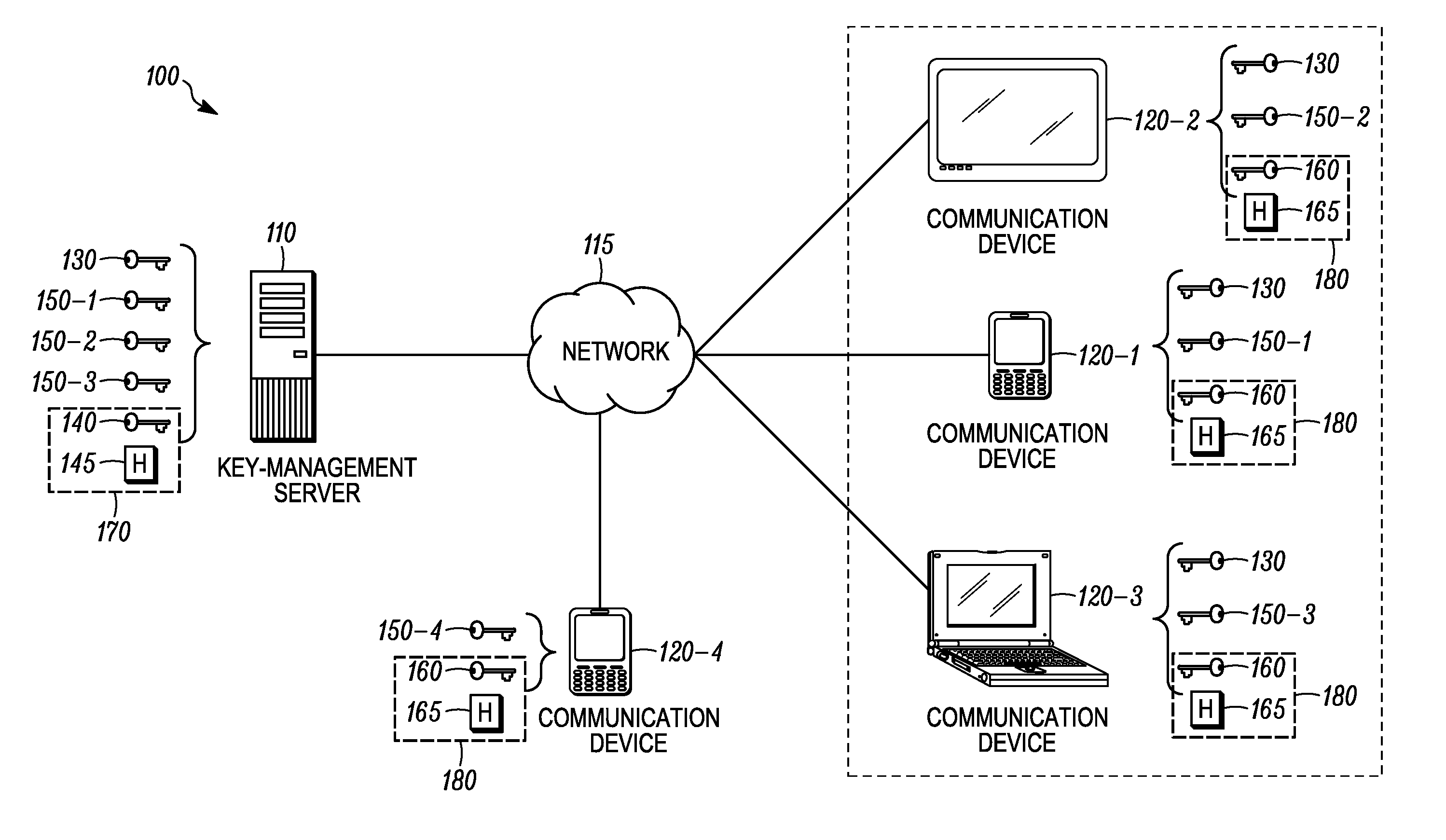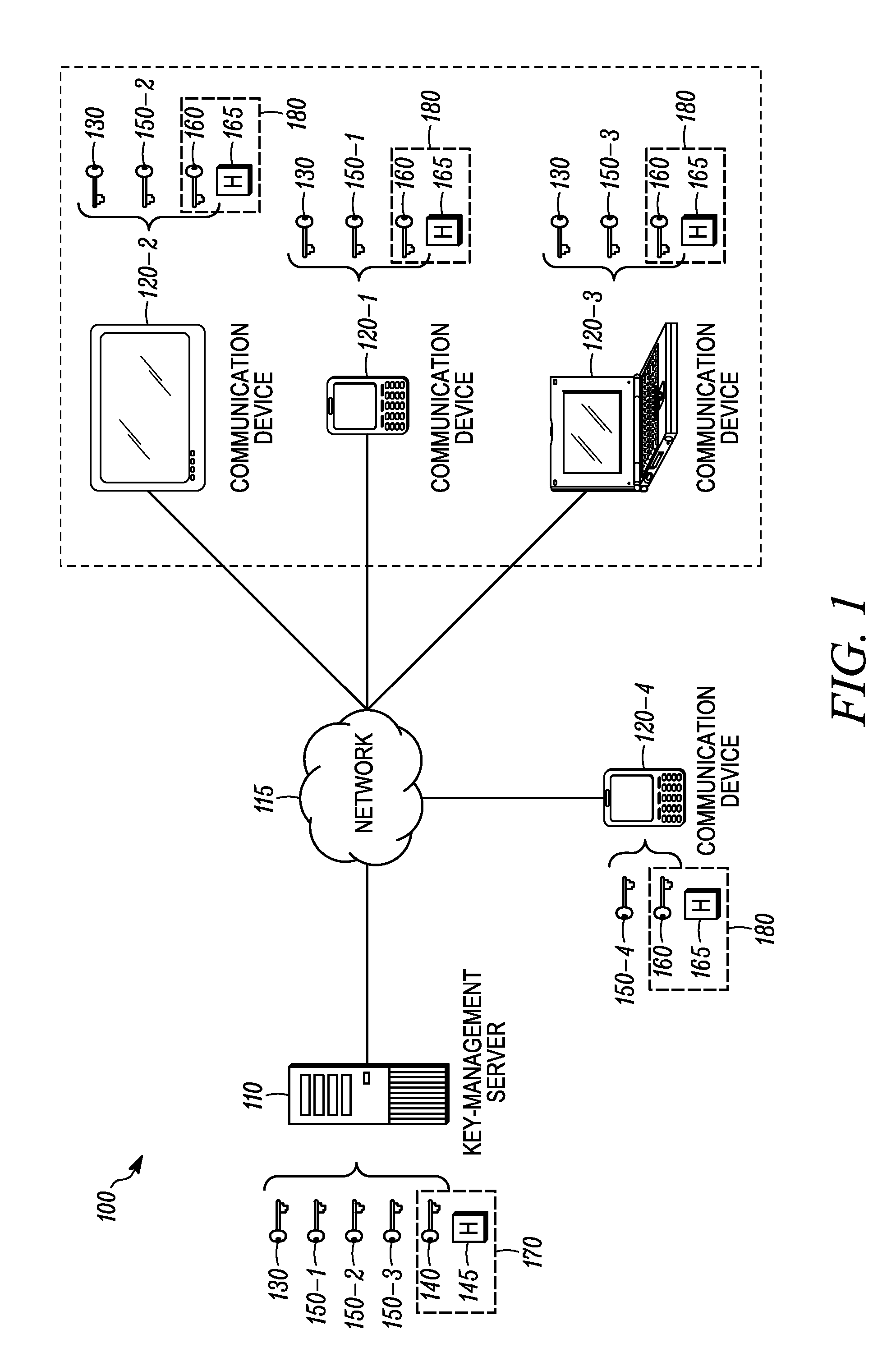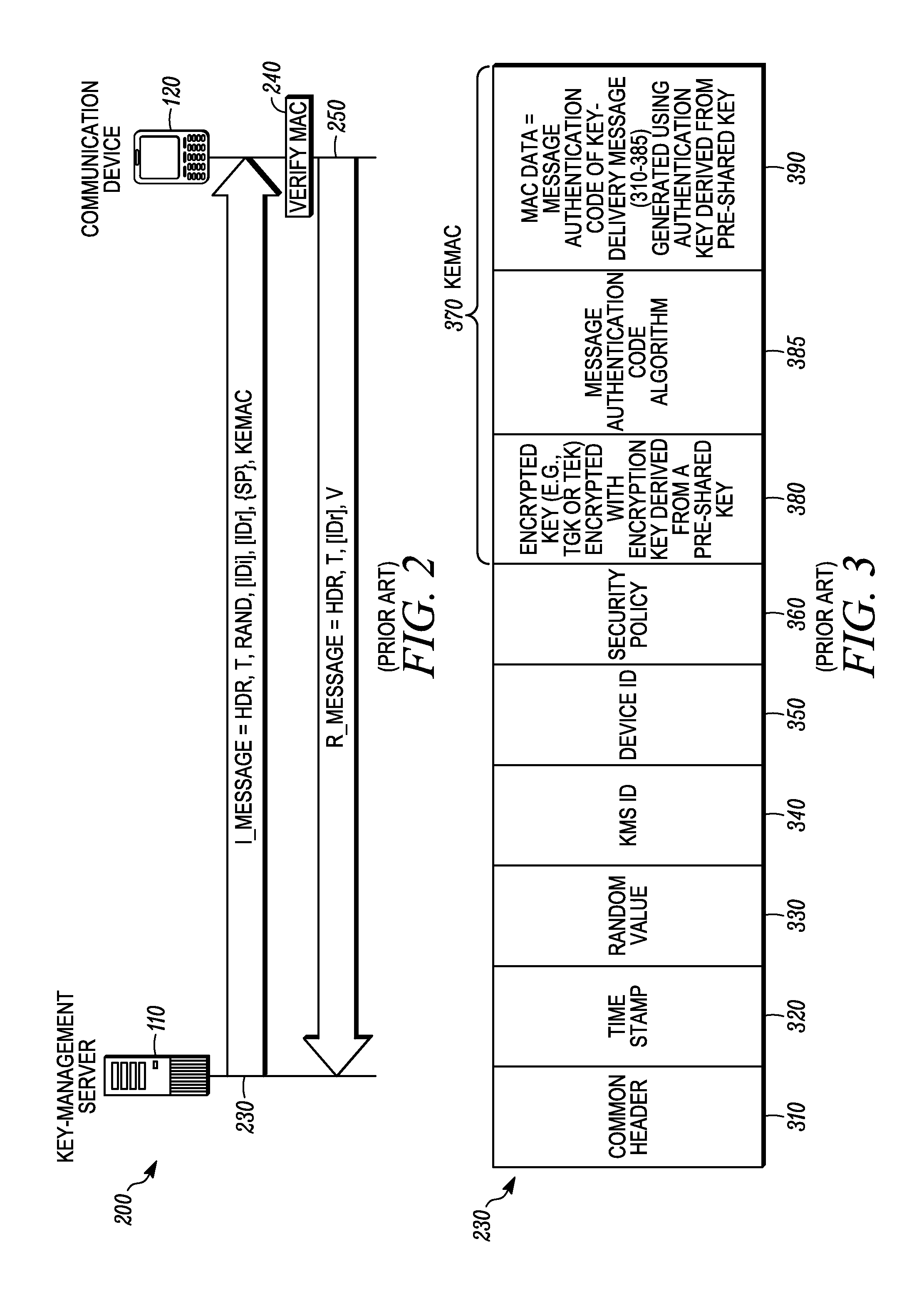Methods and apparatus for source authentication of messages that are secured with a group key
a group key and source authentication technology, applied in the field of key management protocols, can solve the problems of mikey pre-shared key mode not providing recipient cannot positively ascertain whether a key-transport message was secured by a legitimate key server, and the recipient cannot provide a mechanism for source authentication
- Summary
- Abstract
- Description
- Claims
- Application Information
AI Technical Summary
Benefits of technology
Problems solved by technology
Method used
Image
Examples
Embodiment Construction
[0032]Methods, systems and apparatus are provided for source authentication. In accordance with some of the disclosed embodiments, a key-management server generates a key-delivery message comprising: a key data transport payload secured with a group key, and a source authentication payload. Upon receiving the key-delivery message at a communication device, the communication device may verify whether the source authentication payload of the key-delivery message is valid. When the source authentication payload is determined to be valid the communication device thereby authenticates that the key-delivery message was transmitted by the key-management server.
[0033]FIG. 1 is block diagram of a communication system 100. The network includes a server 110 and communication devices 120 that communicate with each other over a network 115. The server 110 and the communication devices can communicate with each other over the network 115 using either wired and / or connections, and although not ill...
PUM
 Login to View More
Login to View More Abstract
Description
Claims
Application Information
 Login to View More
Login to View More - R&D
- Intellectual Property
- Life Sciences
- Materials
- Tech Scout
- Unparalleled Data Quality
- Higher Quality Content
- 60% Fewer Hallucinations
Browse by: Latest US Patents, China's latest patents, Technical Efficacy Thesaurus, Application Domain, Technology Topic, Popular Technical Reports.
© 2025 PatSnap. All rights reserved.Legal|Privacy policy|Modern Slavery Act Transparency Statement|Sitemap|About US| Contact US: help@patsnap.com



